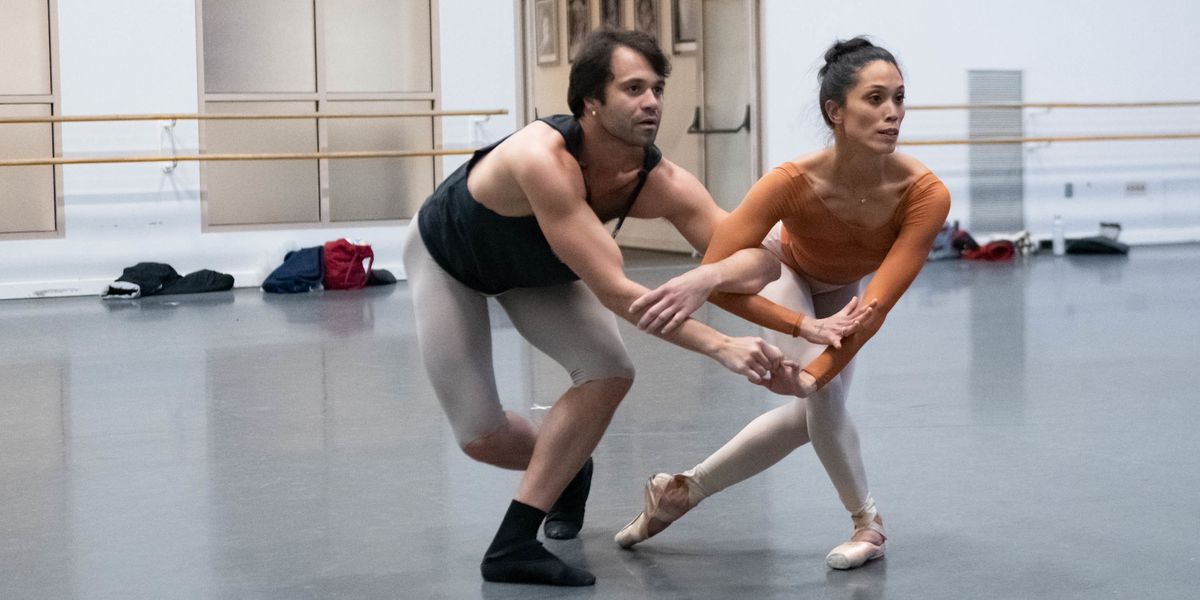Fear of Reinjury Could Make You More Prone to Hurting Yourself Again. Here's How to Avoid It
It was Boston Ballet’s first full run-through of its upcoming show, Kylián/Wings of Wax. As he prepared with a plié for a big saut de basque, principal dancer Paulo Arrais, 32, heard a Velcro-like sound and suddenly fell to the floor. He went into a state of shock, hyperventilating and feeling intense pressure on his knee. It turned out to be a full patellar tendon rupture, requiring surgery and an entire year off before he could return to the company.
Though his physical condition continues to improve, Arrais’ mental recovery has also been challenging. “Treating your mind is just as important as treating your body,” he says.
Feeling safe when returning to the studio can be tricky for any dancer. Some researchers believe a fear of reinjury can actually make athletes more prone to hurting themselves again. We talked to several medical professionals to understand why that might happen and what dancers can do to overcome that anxiety.
Reasons for Reinjury
There are several theories about why worrying about another injury can make a recurrence more likely. “When we experience greater life stress, we carry greater tension in our body, which puts us at risk for strains and sprains,” says Dr. Windee Weiss, professor of sports psychology at the University of Northern Iowa. She explains that as dancers realize that the injured part of their body doesn’t feel the same as before, they often automatically assume that’s a bad sign. This anxiety can distract them while they resume their training, leading to tense muscles and a lack of focus that could cause an acute injury with one misstep.
At the same time, being overly attentive to how your body feels can also make you susceptible to another incident. “It’s easy to get too cerebral, but your body does better if the movements are preprogrammed,” says Dr. Lauren Elson, the director of dance medicine at Spaulding Rehabilitation in Boston. “If people think too hard about a movement, their natural patterns are disrupted and their moves are less efficient, throwing them off balance.”
A dancer could hurt themselves while adjusting to the new and unfamiliar patterns their body has adopted as the injured tissue heals. They might also refrain from dancing full-out, making it more difficult to properly learn choreography—which could lead to an injury later on when they attempt those movements in rehearsal.
Build a Team
A support system is key to overcoming these mental hurdles. “An injury causes a breakdown of confidence in your own body,” says Miriam Rowan, psychologist at McLean Hospital/Harvard Medical School. “The honesty and supportiveness of a social network is key when we’re asking, ‘How much can I trust my friends to tell me that I’m back to where I was? Does the PT really know that I can push more?’ Trust allows us to rebuild confidence.”
Arrais admits that his medical team has sometimes protected him from himself. Six months after his injury, Boston Ballet was performing Giselle, and he wanted to be part of it. “My physical therapist said, ‘Why don’t you walk first?’ I needed that reality check,” he says.
Stay in Motion
Make rehab exercises dance-oriented as soon as possible. “Otherwise, you have a dancer who’s physically cleared but overwhelmed because he hasn’t thought about technique and feels behind,” says Weiss. Engaging your turnout before your first barre back, for instance, will make a ballet class feel less awkward. For those recovering from acute lower-body injuries, Elson suggests focusing on core control, stability and non–weight-bearing cross-training exercises to come back stronger.
Use Imagery
Practicing compassion-focused imagery prior to entering the studio can help you relax and be less critical when doing self-corrections. “Thinking about a soothing breath that takes over your body, or a blanket in your favorite color wrapping around you, can bring you to a calmer place,” says Rowan. “It will help you stay in the present and avoid muscle tension.”
Weiss also recommends visualizing what it looks and feels like to do familiar movements. “Maybe you can do your entire warm-up in your head, or you can do the arm positions and remember what the movements feel like,” she says.
Dancers are also likely to return strong if they practice self-modeling. “Every day, watch some of your greatest past performances,” says Weiss. “It will increase your confidence and remind you what you’re capable of.”
Even watching other dancers, while sometimes emotionally hard, is an opportunity to keep learning. It will also help remind you of the movements and rep you already know. Weiss says, “Even if you’re physically unable to dance, your brain needs to stay in that mindset.”




